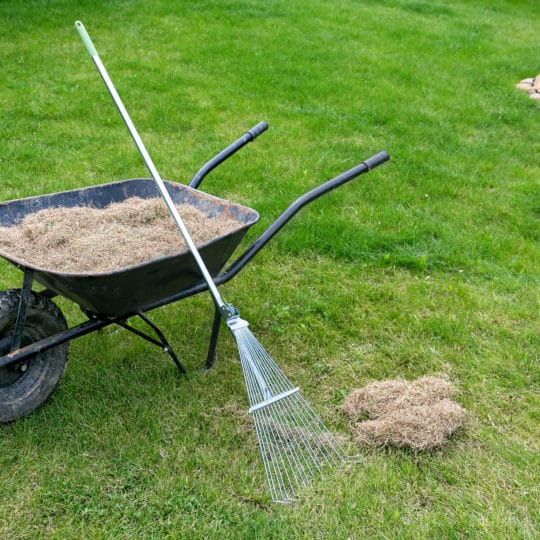Lawn Dethatchers
Pick the One Designed for Your Project
Posted
March 10, 2022

After a winter of drastic temperature changes and harsh precipitation, your lawn may need some TLC. Once the ground has thawed and your grass starts growing again, it’s time to evaluate the condition of your yard. One of the first things you want to do is make sure your grass has room to grow. This means removing layers of thatch—dead grass and debris—to help ensure water and nutrients can reach the roots and your grass can bounce back. There are different lawn dethatchers to choose from, and picking the right one depends on the size of the job.
When to Remove Thatch
If you notice a few spots of decayed grass blades and stems, there’s no need to panic. Some thatch is normal for most lawns. However, too much can prevent enough water and oxygen from getting to the grass roots. If the layer of thatch is around three-quarters of an inch thick, it’s time to remove it. How you go about this process is important, especially since you don’t want to harm any healthy grass. There are various devices on the market designed for removing layers of thatch. Pick the one that’s right for your project and discover how easy it is to refresh your yard.
Lawn Dethatchers
From small jobs in small yards to large lawns with layers of thatch, there’s a dethatcher that’s right for your project.
- Rake. Sometimes a manual tool is just what you need. While it doesn’t have as many functions and features as fancier options, a grooming rake is a lightweight option for pulling or pushing debris. You can also use it for spreading mulch, soil, or gravel or even helping with leaves in the fall. Some designs can be adjusted for height, and it’s easy enough to hang in the garage or storage shed.
- Electric. For tougher jobs that require a little more muscle, use an electric-powered dethatcher. Plug-in models may not be as portable, but they’ll never run out of battery or fuel.
- Bagged. Use a dethatcher with a catcher bag so you don’t have to rake up the loosened layer.
- Tow. Large yards with layers of thatch would benefit from a dethatcher design that can be towed behind a tractor or riding mower. This makes it easier on you and your lawn. These machines are more heavy-duty with thicker tines for durability. Some have multiple rows of tines to make the job even more efficient.
- Aerator. Some dethatching designs do double duty as an aerator. Not only does it lift the thatch layer, but it also perforates the soil for the ultimate in lawn maintenance.
Professional Lawn Care
If you think your lawn could use some extra love this season, but you’re not sure where to start, contact Cardinal Lawns for a consultation. Not only will our lawn experts evaluate your lawn and garden, but we can help you come up with a plan for dethatching, mowing, growing, or anything else your grass or plants may need.

Download Your FREE Fall Recovery Guide
Summer’s extreme conditions can take a toll on your grass and its health. Take some time to learn how to bring your lawn back to life. This handy guide teaches you what needs to be done for a full fall recovery.